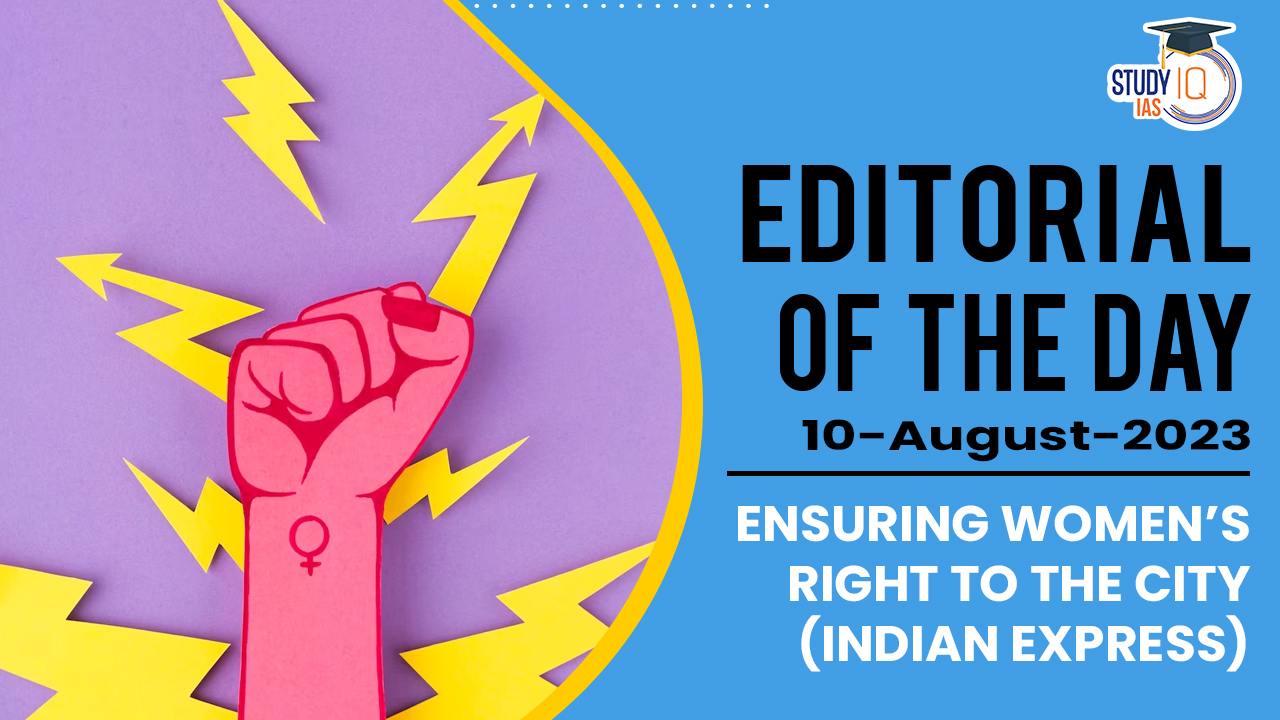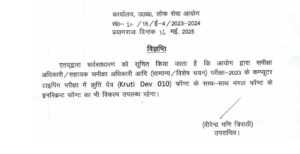Table of Contents
Context: The article is discussing the challenges and inequities faced by women in urban environments, particularly in the context of India’s urbanization. It highlights that while cities offer opportunities and well-being, not everyone, especially women, can fully benefit from these advantages and that women often face constraints such as fear, violence, and exclusion, which limit their ability to flourish in urban settings. Given that India’s urban population is expected to significantly increase to around 60 percent by 2050, the article emphasizes the importance of addressing these inequities and challenges as the country envisions its future urban landscape. The article calls for innovative and bold approaches to urban planning and management that prioritize equity, inclusion, and safety for all individuals, regardless of gender, and it emphasizes the need to measure the success of cities by how well they uphold the dignity and rights of every person within them.
Decoding the Editorial
The article points out that urban planning and management often fail to address the unique economic and social realities of women, and they don’t adequately promote women’s “right to the city,” which essentially means women’s equal and inclusive access to urban resources, opportunities, and benefits.
- Challenges faced by women:
- While cities are places that offer opportunities and a good quality of life, there are disparities in how different groups, particularly women, are able to benefit from these opportunities.
- Women often face limitations due to factors like fear, violence, and exclusion, which hinder their ability to thrive in urban environments.
- The existing urban planning and management approaches often fail to consider or cater to the specific economic and social realities of women.
- As a result, women’s rights to equal access and participation in urban life are not fully realized.
- The context is set in India, where the urban population is currently around 35 percent, but this is expected to increase significantly to about 60 percent by 2050.
- With this projected urbanization, it becomes crucial to address the existing inequalities and challenges, envisioning a future where all individuals, including women, can fully engage in and benefit from urban life.
- Lack of Independence and Freedom:
-
- Women often do not experience a genuine sense of freedom or independence in cities.
- This lack of autonomy is attributed to several factors, with one key reason being the absence of urban planning, design, and governance that adequately consider and address the needs and experiences of women.
- The prevailing urban design often caters primarily to able-bodied, heterosexual men, which results in a failure to account for the diverse realities and requirements of other groups within society, such as women, children, and older individuals.
- This oversight leads to an urban environment that does not fully accommodate the needs and concerns of these groups, particularly women.
- Factors that limit Women’s Equal Access: The article identifies two primary factors that contribute to limiting women’s equal access to and engagement with the city:
-
- Violence and Fear: Women often face the threat of violence and fear when navigating urban spaces. This fear can arise from concerns about personal safety, harassment, and other forms of gender-based violence.
- Unequal Burden of Care Work: Women frequently bear a disproportionate share of caregiving responsibilities, including household and family care work. This unequal burden can restrict their mobility and opportunities to engage in public life.
The article presents a series of findings from various studies conducted in India, highlighting the significant impact of safety concerns on women’s access to education, employment, and public spaces, as well as its broader implications for gender equality and well-being.
- Opportunity Decline: According to a study conducted by the Observer Research Foundation (ORF) in 2021 across 140 Indian cities, 52 percent of women reported that they had to reject opportunities for education and employment due to concerns about their safety. This indicates that safety issues are directly affecting women’s ability to pursue educational and professional opportunities.
- Travel Route Preferences: A 2017 study conducted by the World Bank in Delhi revealed that women were willing to spend an additional 27 minutes daily on their commute to take a route they perceived as safer. This suggests that safety concerns influence women’s transportation choices and route preferences.
- Public Transport Safety: A 2019 study by Ola, a ride-hailing platform, found that only 9 percent of women from 11 cities in India felt safe using public transport. This indicates a widespread lack of safety perception among women when using public transportation.
- Higher Transport Costs: In Mumbai, a study conducted by the Mumbai Metropolitan Region Development Authority (MMRDA) showed that women commuters spent 21 percent more on transportation than men. This increased expenditure is attributed to women’s need to consider multiple activities and prioritize personal safety when planning their travel.
- Impact on Opportunities: The safety concerns highlighted in these studies have a significant impact on women’s access to opportunities, including education and employment. The statement underscores that women’s employment in India is notably lower than men’s (under 20 percent compared to over 70 percent), indicating a gender disparity in the workforce that is influenced by safety-related limitations.
- Well-Being: The lack of safety not only affects women’s access to opportunities but also has broader implications for their overall sense of well-being. Feeling unsafe in public spaces can negatively impact women’s mental and emotional states.
While women’s safety is on the agenda of many, solutions are predominantly posited with a technocratic approach — more CCTV cameras, policing or emergency apps.
- Safety though linked to inclusion and equity, cannot be subsumed under a security perspective alone.
- It is only when these linkages are translated into urban policies that we will find meaningful and sustainable solutions.
- The article suggests that first, we need to accept that this is not a “women’s” issue but an urban issue of equity and inclusion.
- Change is needed in many arenas including physical and social infrastructure, safe spaces, services such as transport and response to gender-based violence.
- The public domain needs to be made more gender friendly and inclusive of all people of diverse ages, socio-economic statuses, genders, abilities and ethnicities.
Potential Way Forward
- Invisible Contribution must be taken care of: The substantial amount of unpaid care work that women undertake, as evidenced by the ILO research and Oxfam report, goes unrecognized in traditional economic metrics. This invisibility of care work has implications for gender roles, economic dynamics, and women’s well-being. Therefore, this issue must be sorted out.
- Rethinking Urban Design: The cities need to reimagine their design and policies to give due importance to care work. Childcare, healthcare, housing, play areas, parks, and leisure spaces should be integrated into urban planning to facilitate the participation of all residents, especially marginalized groups.
- Transforming Cities: By prioritizing and privileging care work, cities have the potential to become more inclusive, nurturing, and focused on well-being rather than just economic production and consumption.
- Existing Efforts: Some cities have taken initial steps to address gender-based concerns, such as providing women-only transport, parks, free buses, and helplines. However, these efforts are not enough, and a more comprehensive approach is required.
- Holistic Approach: The transformation of cities requires a holistic approach that considers the social and economic realities of all residents. Diverse voices, including those of marginalized groups, should inform policy-making to create truly inclusive urban environments.
- Jane Jacobs’ Perspective: The article cites urbanist Jane Jacobs, underscoring the importance of inclusivity and collaboration in city planning and development. This implies that cities thrive when they are created with input from a diverse range of individuals.
- Equity, Inclusion, and Safety: The journey towards creating equitable, inclusive, and safe cities demands innovative and bold approaches. The measure of success should be the dignity and well-being afforded to every person within the city.


 UPPSC RO ARO Exam Date 2025 Out: Typing ...
UPPSC RO ARO Exam Date 2025 Out: Typing ...
 Maharashtra Bill to Curb Urban Naxalism,...
Maharashtra Bill to Curb Urban Naxalism,...
 International Maize and Wheat Improvemen...
International Maize and Wheat Improvemen...





















